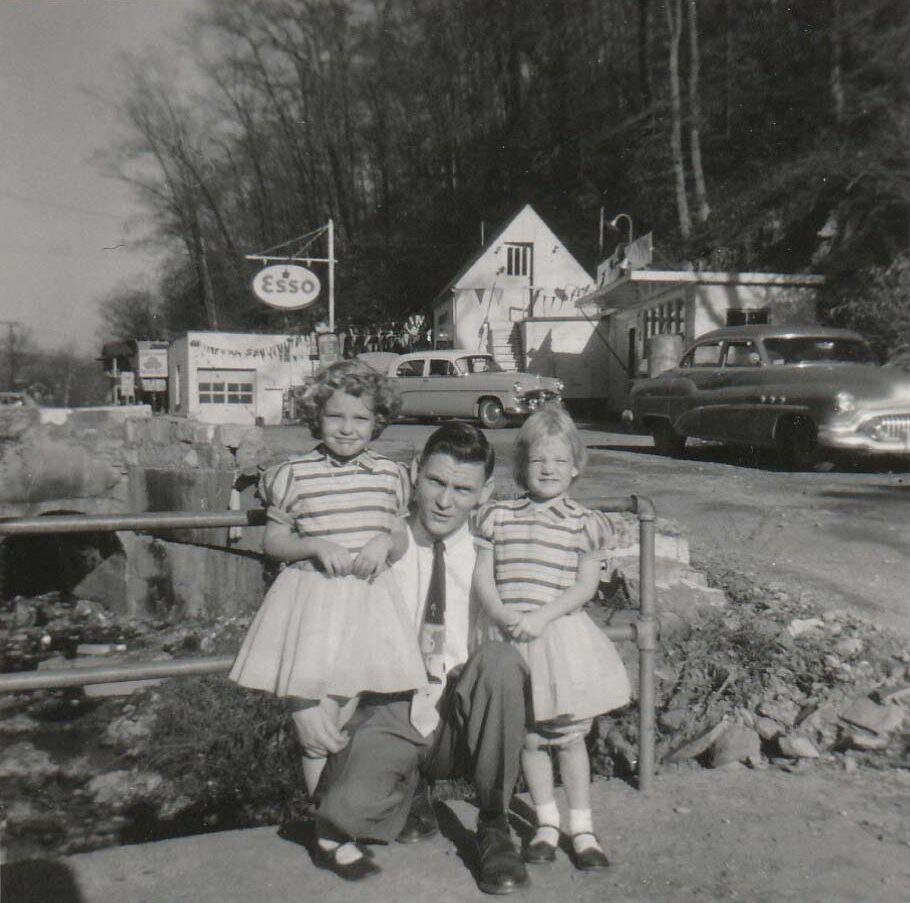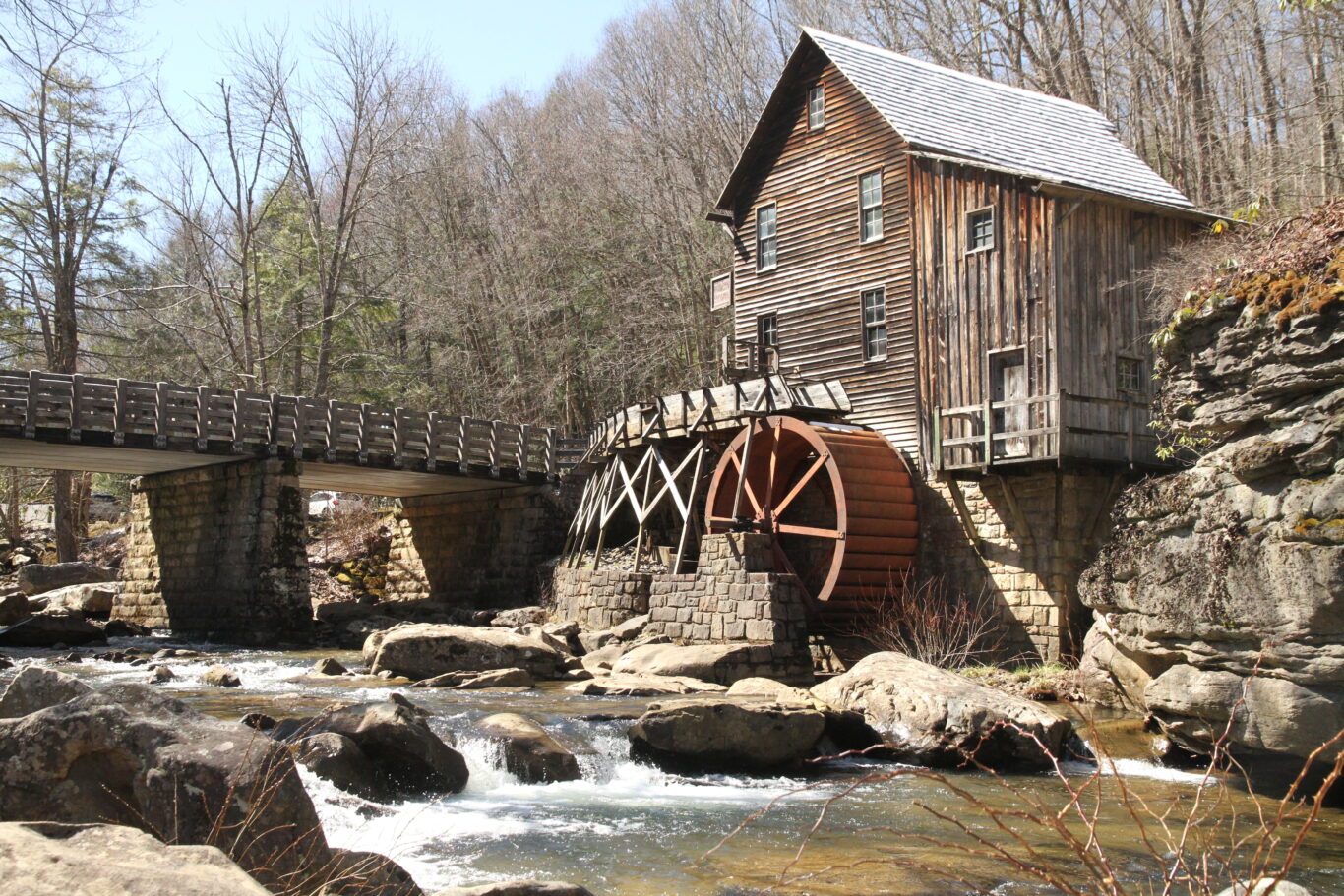By Kimberly Brownlee
Early in the 19th century on the hills and in the hollows “out back of West Columbia” a small but vibrant community was settled called Mission Ridge. Named for the ridge that it spread out over, most of the folks there made their living by farming—a tough endeavor due to the steep terrain. Many of the early residents had inherited at least part of the land they owned, and later passed on parcels to their children. Many were related to each other through various bloodlines and marriages. Some of the early family names in the community included Edwards, Rickard, Fowler, Mourning, Lewis, and Bass. Like innumerable other rural communities of the 19th century, the people who lived there worked together, played together, and worshiped together.

The community was strong enough that by 1839 a congregation was organized under the United Brethren in Christ and the Mission Ridge Church was built. James Thomas “Tom” Edwards, son of Riley Edwards, who was born and grew up on Mission Ridge, said, “The Mission Ridge Community once had a school, church, and a few small businesses.” The church remained on its original site on the ridge until 1897 when both the building and the congregation were moved to a more accessible location. Today the only thing left to mark the original location of the church, its graveyard, and in fact, the hub of the old Mission Ridge community itself is a single marked grave. That is the grave of Sarah Lake Dodson, wife of Charles G. Dodson who died in the Civil War.

Growing as it was, like most rural communities in the western counties of Virginia at that time, Mission Ridge lacked a school for educating its children. The Virginia Assembly, heavily controlled by representatives from the eastern counties, had consistently passed school legislation that was not suited for application in the western counties. When, in 1861, it became clear that Virginia was going to secede from the Union, representatives from the western counties convened in Wheeling and declared both their loyalty to the Union and their independence from Virginia. Then, when West Virginia gained statehood in 1863 a new constitution was written and amended in 1872. It included the requirement that the legislature pass an act providing for “a thorough and efficient system of free schools.”

The act was passed the next year and required that each county elect a superintendent, and that each of its magisterial districts elect three commissioners to serve as the district’s board of education. The district boards were authorized to purchase, rent, or otherwise acquire real estate to be used for educational purposes and to erect suitable school buildings on them.

Records show that in 1876 Lewis W. and Christina Edwards deeded a one-quarter acre lot on Mission Ridge to the Board of Education of Robinson District, Mason County, to be used specifically for educational purposes.

Soon afterwards members of the community came together and constructed a one-room schoolhouse on the lot which was located near the church. It was a frame structure and a much later inspection showed that the boards were hand sawn and planed, and that it had been built with square nails.
James Thomas “Tom” Edwards said, “I started to school when I was six years old [around 1880]. It was called Mission Ridge School and was located about a mile from our house. Luke Boggs was my first teacher who boarded at our house … The teachers in those days were hired by the trustees and received $30 a month and often had to walk three and four miles to and from school. The pupils numbered about forty.” He remembered that some local boys put on the play “Ten Nights on a Bar Room” at the schoolhouse and that another time he watched several of the neighbor men ride their horses past the school on a fox hunt.
The Great Depression hit West Virginia particularly hard, and schools suffered. Before 1933 district schools were supported by property taxes but when property values plummeted during this financial catastrophe many rural districts could not keep up. In 1933, the state passed legislation abolishing the district school system in favor of a county wide school system, reducing the number of districts from around 400 to 55. As a result, the number of one-room schoolhouses began to decline.
Early in 1942, as the US became involved in WWII, the federal government purchased over 8,300 acres on the east bank of the Ohio River north of Point Pleasant, for the construction of a plant to produce trinitrotoluene (TNT) for use in manufacturing munitions. Construction of the West Virginia Ordnance Works, known locally as the “TNT,” began in March 1942 and was supervised by the Huntington District of the Army Corps of Engineers. The plant began operations in September of that year and was soon producing 720,000 tons of TNT per 24-hour period. As a result of the land purchase, approximately 150 families had to be relocated.
In addition, the construction and operating zone included the location of the Mission Ridge School, and the dangers of manufacturing explosive material made it necessary for the school building to be moved. How that occurred is unknown, but some time around 1946-47 it was relocated to a lot in a nearby hollow where it was a safe distance from the plant. That seven-tenths acre lot was deeded in 1946 to the Mason County Board of Education by the property owner, Beulah Bechtel. During the War years the school’s children attended the Ordnance School in Point Pleasant, which had been set up by the federal government to serve the children of TNT employees.

Once the War was over things began to change quickly for the Mission Ridge school and many other one-room schools across the state. During the following years, many folks in the hills and hollows of the state began leaving on the “Hillbilly Highway” for jobs in northern cities like Detroit, Toledo, Akron, Dayton, and Pittsburgh. This migration caused a substantial decrease in the state’s population and thus fewer children were left to attend the country schools. In addition, roads continued to be improved making transportation easier. Vehicles improved as well, and school buses were able to reach deeper into rural areas to transfer children to other, more easily accessible schools. These and other factors added to an already aggressive trend to consolidate small schools into larger, more efficient ones. The result was that the old one-room schoolhouses began to be abandoned.
The last year that school was held in the Mission Ridge schoolhouse was 1952-1953 and Ivy Sleeth was its last teacher. In 1956, the Mason County Board of Education and Beulah Bechtel deeded the school lot, along with the schoolhouse building, to then property owner Joe Neal. This effectively returned the lot to the parcel from which it had originally been taken. When Mr. Neal died, the property passed to his son, Ray Neal, and the schoolhouse building was primarily unused for about 20 more years.
The schoolhouse’s future again began to change in 1973 when Edith Fox, president of the Mason County Extension Homemakers Club Council, began thinking about a project for the club to undertake in celebration of the nation’s upcoming Bicentennial. She conceived of the idea to locate, acquire, move, and restore a one-room schoolhouse as a representation of the history of education—particularly rural education—in America.
She first approached the club’s membership with the idea, and it was received with enthusiasm. Mrs. Fox, who also contributed a regular column for the Point Pleasant Register, wrote about the idea in her column. The response from the public was positive and offers of donations of books and furnishings poured in. One retired teacher from the county, Wilbur Plants, wrote back “Nothing, in my opinion, could be more truly representative of an era of education in America,” and donated $50.


In June, Ms. Fox and two other representatives from the Council spoke about the project at a meeting of the County Commissioners and asked for their help in finding a location for the schoolhouse that would be easily accessible to tourists and local residents. Her request was well received, and the Commissioners promised to provide “all possible assistance,” a promise that they consistently fulfilled throughout the course of the project.
The Homemakers Council oversaw 18 local clubs in the county. Each of those clubs committed to raising $100 to contribute to the project. After much research and study the Homemakers chose the Mission Ridge Schoolhouse for their project. It was structurally sound and in good condition despite being 100 years old. Many of the other one-room schoolhouses still standing in the area were made of block and could not be moved, but the Mission Ridge school building was of frame and clapboard construction and its components were original. In July 1974 the Mason County Court, on behalf of the Homemakers, purchased the building from Ray Neal for $600.
The next step was to arrange for the building to be moved off Neal’s property to Krodel Park in Point Pleasant, where the Bicentennial celebration was to be held. In June 1975 William Nibert, a supervisor with the Governor’s Manpower Program who was working at the park at the time, contacted U.S. Representative John Slack (WV) and asked him to seek help from the military to move the building. Slack contacted an official at the Department of Defense and asked if they would arrange to move it using a military helicopter. Not surprisingly his request was politely declined. In the meantime, the county commissioners had been accepting bids from local contractors for the job and in November 1975 they voted to award the contract to move the schoolhouse to Virgil Fike of Fike Moving Company. The actual move finally took place in May 1976.
Once the move was accomplished the formal part of the Homemakers’ project was complete. However, a lot of work was left to be done and another retired Mason County teacher, Ethel Louise Gibbs, led the effort. The building itself still had to be furnished and arranged. To prepare herself for the job she gathered facts about the school’s history through research and personal interviews. The Homemakers had purchased school desks prior to the move and some of the local clubs had sponsored workdays to clean them up. The Board of Education donated an old teacher’s desk and the Homemaker’s Council purchased a pot-bellied stove.
Separately, in 1973 Mr. Walden Roush of Point Pleasant proposed to the County Commissioners the creation of a county farm museum. His vision was of a tourist attraction where school children and tourists could learn about the farm heritage of the state through exhibits of antique farming equipment and historical buildings. His proposal eventually came to fruition in 1976 when he started the museum with a single building and a few old pieces of equipment. Soon Mr. Roush and subsequent curators began collecting more buildings of historic value from around the county and moving them to the museum’s grounds. Eleven years after Mr. Roush’s initial proposal, West Virginia Governor John D. Rockefeller signed an Act officially designating the museum the “West Virginia State Farm Museum.” Once the bicentennial celebration was over and the schoolhouse no longer had a fitting home at Krodel Park, the Homemakers decided to donate the structure to the farm museum and the building was moved once again. Today, it stands ready for visitors among more than 30 other historic buildings including a doctor’s office, log church, country store, and a taxidermy shop, along with a large collection of 19th century farming equipment.

KIMBERLY BROWNLEE
Brownlee, Kimberly. “Saving a Schoolhouse: The History of the Mission Ridge One-Room School.” Goldenseal West Virginia Traditional Life, Summer 2025. https://goldenseal.wvculture.org/saving-a-schoolhouse-the-history-of-the-mission-ridge-one-room-school/




